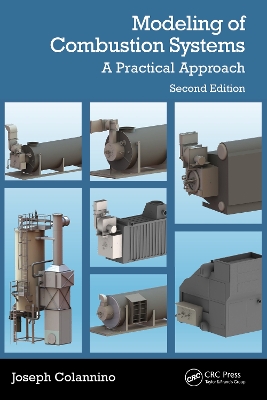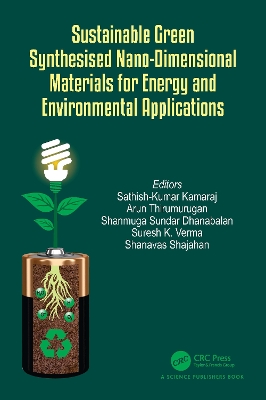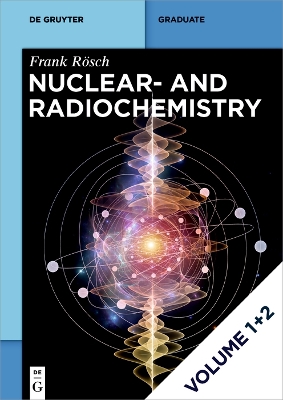Dye-sensitized Solar Cells
 portes grátis
portes grátis
Dye-sensitized Solar Cells
Dai, Songyuan; China Science Publishing & Media Ltd.
De Gruyter
07/2022
524
Dura
Inglês
9783110344202
15 a 20 dias
1000
Descrição não disponível.
Chapter 1 Introduction
1.1 Brief introduction of solar cells
1.1.1 History of solar cells
1.1.2 Developing progress of solar cells
1.1.3 Solar cell application
1.2 Classification and application of solar cells
1.2.1 Classification of solar cells
1.2.2 Classification and application of solar cell panels
1.2.3 Silicon solar cells
1.2.4 Cadmium telluride solar cells (CdTe)
1.2.5 Copper indium gallium selenide solar cells (CIGS)
1.2.6 Dye-sensitized solar cells (DSC)
1.2.7 Polymer solar cells
1.2.8 Other kinds of solar cells
1.3 Dye-sensitized solar cells
1.3.1 History of DSCs
1.3.2 Research progress of DSCs
1.3.3 Technical properties of DSCs
1.3.4 Future of DSCs
Chapter 2 Nano Semiconductor Materials
2.1 Application of nano semiconductor materials in DSC
2.1.1 Nano semiconductor materials in DSC
2.1.2 Preparing of nano semiconductor materials
2.2 General nanomaterials in DSC
2.2.1 Titanium dioxide (TiO2)
2.2.2 Zinc oxide (ZnO)
2.2.3 Tin dioxide
2.2.4 Other kinds of nanomaterials
2.3 Application of nanomaterials with novelty structure in solar cells
2.3.1 One dimension nanomaterials
2.3.2 Nanoporous films with TiO2 network
2.4 Energy band of TiO2 films
2.4.1 The flat band of semiconductor electrode
2.4.2 Measurement of flat band
2.4.3 Effects of measurement on flat band
2.4.4 Energy band of nanoporous film electrode
2.5 The modification of the photoelectrodes
2.5.1 Physical and Chemical surface modification
2.5.2 Doping
2.5.3 Others
2.6 Design and optimization
2.6.1 The advantages of small size particle compact layer
2.6.2 Nanoporous layer and dye loading
2.6.3 The scattering properties of larger size particles
2.6.4 Structure design of large size nanoporous electrode
2.7 P type DSCs
2.7.1 Working principle of P-DSCs
2.7.2 Semiconductors in P-DSCs
2.7.3 Other kinds of P type semiconductors in DSCs
Chapter 3 Dye Sensitizers
3.1 Introduction
3.1.1 The effect of dye sensitizers
3.1.2 Classification of dye sensitizers
3.1.3 Structure and molecular design of dye sensitizers
3.1.4 Dye sensitizer related quantum chemistry calculation
3.2 Dye sensitizer in DSC with photoanodes
3.2.1 Inorganic dye sensitizers
3.2.2 Organic dye sensitizers
3.3 Dye sensitizer in DSC with photoanodes
3.3.1 Structure characteristics of cathode sensitizing cell sensitizer
3.3.2 Research progress on dye sensitizer in DSC with photoanodes
Chapter 4 Electrolyte
4.1 Classification of electrolyte
4.1.1 Organic liquid electrolyte
4.1.2 Ionic liquid electrolyte
4.1.3 Quasi-solid state and solid state electrolyte
4.2 Redox couple in electrolyte
4.2.1 I-/I3- redox couple
4.2.2 Other kinds of redox couple
4.3 Additives in electrolyte
4.3.1 The calssification of additives in electrolyte
4.3.2 How additives works in electrolyte
Chapter 5 Counter Electrode
5.1 Materials and preparation of counter electrode
5.1.1 Pt counter electrode
5.1.2 Carbon counter electrode
5.1.3 Other materials for counter electrode
5.2 The reaction on counter electrode
5.2.1 The principle of redox reaction on counter electrode
5.2.2 The Characterization methods of redox reaction on counter electrode
Chapter 6 Photoelectric Chemical Interface
6.1 Solid-solid contact interfaces
6.1.1 Properties of solid-solid contact interfaces
6.1.2 Solid-solid contact interfaces in DSC
6.1.3 Properties of solid-solid contact interfaces in DSC
6.2 Solid-liquid contact interfaces
6.2.1 Properties of solid-liquid contact interfaces
6.2.2 Solid-liquid contact interfaces in DSC
6.2.3 Properties of solid-liquid contact interfaces in DSC
6.3 Frequency-domain analysis of contact interface kinetics
6.3.1 Frequency-domain and time-domain
6.3.2 The measurement methods of contact interface kinetics
6.3.3 Electrical modulation techniques for the study of contact interface processes
6.3.4 Optical modulation techniques for the study of contact interface processes
6.3.5 The difference between EIS and IMPS
6.4 Interfacial electron injection process
6.4.1 The TiO2 band structure and dye adsorption
6.4.2 The generation and injection kinetics of the photogenerated electron
6.5 The transport kinetics of the photogenerated electron
6.6 The collection kinetics of the photogenerated electron
6.7 Recombination kinetics of the photogenerated electron
6.7.1 Kinetic characteristics of I-/I3- couple
6.7.2 The position of the photogenerated electron recombination
6.7.3 The mechanism of the photogenerated electron recombination
6.7.4 Influence of local states on the photogenerated electron recombination
6.8 The mutual restriction between transport and recombination
6.9 Conduction band edge movement and surface passivation
6.10 Influence of contact interface characteristics on the kinetics
6.10.1 Influence of the electrical properties on kinetics at two phases contact interface
6.10.2 Influence of the electrical properties on kinetics at three phases contact interface
6.10.3 Influence of Dyed-TiO2/EL interface modification on kinetics in different electrolytes
6.11 Influence of the optical properties on interfacial kinetics
6.12 Influence of the dye distribution on interfacial kinetics
Chapter 7 Structure design and numerical analysis
7.1 Light absorption and electron transport of DSC
7.1.1 The generation of photoelectron
7.1.2 The transport and recombination of photoelectron
7.1.3 The photocurrent and photovoltage
7.2 Charge transport of DSC
7.2.1 The charge transport model
7.2.2 The series resistant of large-scale DSC
7.2.3 The effect of series resistant on DSC performance
7.3 Structure design and optimization of large-scale DSC
7.3.1 The light absorption loss of large-scale DSC
7.3.2 The charge collection loss of large-scale DSC
7.3.3 The structure optimization of DSC module
Chapter 8 Testing and Application
8.1 Photovoltaic Performance Testing
8.1.1 Solar spectrum
8.1.2 Testing parameters
8.1.3 Test principle
8.1.4 Test Standards
8.1.5 Multi-channel real-time monitoring for photovoltaic performance
8.1.6 Influence of test conditions on photovoltaic performance testing
8.2 Application of DSC module
8.2.1 Application and technology of independent photovoltaic arrays
8.2.2 Application and design of building integrated photovoltaics
8.2.3 Application of photovoltaic agriculture integration
1.1 Brief introduction of solar cells
1.1.1 History of solar cells
1.1.2 Developing progress of solar cells
1.1.3 Solar cell application
1.2 Classification and application of solar cells
1.2.1 Classification of solar cells
1.2.2 Classification and application of solar cell panels
1.2.3 Silicon solar cells
1.2.4 Cadmium telluride solar cells (CdTe)
1.2.5 Copper indium gallium selenide solar cells (CIGS)
1.2.6 Dye-sensitized solar cells (DSC)
1.2.7 Polymer solar cells
1.2.8 Other kinds of solar cells
1.3 Dye-sensitized solar cells
1.3.1 History of DSCs
1.3.2 Research progress of DSCs
1.3.3 Technical properties of DSCs
1.3.4 Future of DSCs
Chapter 2 Nano Semiconductor Materials
2.1 Application of nano semiconductor materials in DSC
2.1.1 Nano semiconductor materials in DSC
2.1.2 Preparing of nano semiconductor materials
2.2 General nanomaterials in DSC
2.2.1 Titanium dioxide (TiO2)
2.2.2 Zinc oxide (ZnO)
2.2.3 Tin dioxide
2.2.4 Other kinds of nanomaterials
2.3 Application of nanomaterials with novelty structure in solar cells
2.3.1 One dimension nanomaterials
2.3.2 Nanoporous films with TiO2 network
2.4 Energy band of TiO2 films
2.4.1 The flat band of semiconductor electrode
2.4.2 Measurement of flat band
2.4.3 Effects of measurement on flat band
2.4.4 Energy band of nanoporous film electrode
2.5 The modification of the photoelectrodes
2.5.1 Physical and Chemical surface modification
2.5.2 Doping
2.5.3 Others
2.6 Design and optimization
2.6.1 The advantages of small size particle compact layer
2.6.2 Nanoporous layer and dye loading
2.6.3 The scattering properties of larger size particles
2.6.4 Structure design of large size nanoporous electrode
2.7 P type DSCs
2.7.1 Working principle of P-DSCs
2.7.2 Semiconductors in P-DSCs
2.7.3 Other kinds of P type semiconductors in DSCs
Chapter 3 Dye Sensitizers
3.1 Introduction
3.1.1 The effect of dye sensitizers
3.1.2 Classification of dye sensitizers
3.1.3 Structure and molecular design of dye sensitizers
3.1.4 Dye sensitizer related quantum chemistry calculation
3.2 Dye sensitizer in DSC with photoanodes
3.2.1 Inorganic dye sensitizers
3.2.2 Organic dye sensitizers
3.3 Dye sensitizer in DSC with photoanodes
3.3.1 Structure characteristics of cathode sensitizing cell sensitizer
3.3.2 Research progress on dye sensitizer in DSC with photoanodes
Chapter 4 Electrolyte
4.1 Classification of electrolyte
4.1.1 Organic liquid electrolyte
4.1.2 Ionic liquid electrolyte
4.1.3 Quasi-solid state and solid state electrolyte
4.2 Redox couple in electrolyte
4.2.1 I-/I3- redox couple
4.2.2 Other kinds of redox couple
4.3 Additives in electrolyte
4.3.1 The calssification of additives in electrolyte
4.3.2 How additives works in electrolyte
Chapter 5 Counter Electrode
5.1 Materials and preparation of counter electrode
5.1.1 Pt counter electrode
5.1.2 Carbon counter electrode
5.1.3 Other materials for counter electrode
5.2 The reaction on counter electrode
5.2.1 The principle of redox reaction on counter electrode
5.2.2 The Characterization methods of redox reaction on counter electrode
Chapter 6 Photoelectric Chemical Interface
6.1 Solid-solid contact interfaces
6.1.1 Properties of solid-solid contact interfaces
6.1.2 Solid-solid contact interfaces in DSC
6.1.3 Properties of solid-solid contact interfaces in DSC
6.2 Solid-liquid contact interfaces
6.2.1 Properties of solid-liquid contact interfaces
6.2.2 Solid-liquid contact interfaces in DSC
6.2.3 Properties of solid-liquid contact interfaces in DSC
6.3 Frequency-domain analysis of contact interface kinetics
6.3.1 Frequency-domain and time-domain
6.3.2 The measurement methods of contact interface kinetics
6.3.3 Electrical modulation techniques for the study of contact interface processes
6.3.4 Optical modulation techniques for the study of contact interface processes
6.3.5 The difference between EIS and IMPS
6.4 Interfacial electron injection process
6.4.1 The TiO2 band structure and dye adsorption
6.4.2 The generation and injection kinetics of the photogenerated electron
6.5 The transport kinetics of the photogenerated electron
6.6 The collection kinetics of the photogenerated electron
6.7 Recombination kinetics of the photogenerated electron
6.7.1 Kinetic characteristics of I-/I3- couple
6.7.2 The position of the photogenerated electron recombination
6.7.3 The mechanism of the photogenerated electron recombination
6.7.4 Influence of local states on the photogenerated electron recombination
6.8 The mutual restriction between transport and recombination
6.9 Conduction band edge movement and surface passivation
6.10 Influence of contact interface characteristics on the kinetics
6.10.1 Influence of the electrical properties on kinetics at two phases contact interface
6.10.2 Influence of the electrical properties on kinetics at three phases contact interface
6.10.3 Influence of Dyed-TiO2/EL interface modification on kinetics in different electrolytes
6.11 Influence of the optical properties on interfacial kinetics
6.12 Influence of the dye distribution on interfacial kinetics
Chapter 7 Structure design and numerical analysis
7.1 Light absorption and electron transport of DSC
7.1.1 The generation of photoelectron
7.1.2 The transport and recombination of photoelectron
7.1.3 The photocurrent and photovoltage
7.2 Charge transport of DSC
7.2.1 The charge transport model
7.2.2 The series resistant of large-scale DSC
7.2.3 The effect of series resistant on DSC performance
7.3 Structure design and optimization of large-scale DSC
7.3.1 The light absorption loss of large-scale DSC
7.3.2 The charge collection loss of large-scale DSC
7.3.3 The structure optimization of DSC module
Chapter 8 Testing and Application
8.1 Photovoltaic Performance Testing
8.1.1 Solar spectrum
8.1.2 Testing parameters
8.1.3 Test principle
8.1.4 Test Standards
8.1.5 Multi-channel real-time monitoring for photovoltaic performance
8.1.6 Influence of test conditions on photovoltaic performance testing
8.2 Application of DSC module
8.2.1 Application and technology of independent photovoltaic arrays
8.2.2 Application and design of building integrated photovoltaics
8.2.3 Application of photovoltaic agriculture integration
Este título pertence ao(s) assunto(s) indicados(s). Para ver outros títulos clique no assunto desejado.
Erneuerbare Energien; Photovoltaik; Sonnenenergie; Electrochemistry; Industrial Chemistry; Renewable Energy; Chemical Engineering; Physics
Chapter 1 Introduction
1.1 Brief introduction of solar cells
1.1.1 History of solar cells
1.1.2 Developing progress of solar cells
1.1.3 Solar cell application
1.2 Classification and application of solar cells
1.2.1 Classification of solar cells
1.2.2 Classification and application of solar cell panels
1.2.3 Silicon solar cells
1.2.4 Cadmium telluride solar cells (CdTe)
1.2.5 Copper indium gallium selenide solar cells (CIGS)
1.2.6 Dye-sensitized solar cells (DSC)
1.2.7 Polymer solar cells
1.2.8 Other kinds of solar cells
1.3 Dye-sensitized solar cells
1.3.1 History of DSCs
1.3.2 Research progress of DSCs
1.3.3 Technical properties of DSCs
1.3.4 Future of DSCs
Chapter 2 Nano Semiconductor Materials
2.1 Application of nano semiconductor materials in DSC
2.1.1 Nano semiconductor materials in DSC
2.1.2 Preparing of nano semiconductor materials
2.2 General nanomaterials in DSC
2.2.1 Titanium dioxide (TiO2)
2.2.2 Zinc oxide (ZnO)
2.2.3 Tin dioxide
2.2.4 Other kinds of nanomaterials
2.3 Application of nanomaterials with novelty structure in solar cells
2.3.1 One dimension nanomaterials
2.3.2 Nanoporous films with TiO2 network
2.4 Energy band of TiO2 films
2.4.1 The flat band of semiconductor electrode
2.4.2 Measurement of flat band
2.4.3 Effects of measurement on flat band
2.4.4 Energy band of nanoporous film electrode
2.5 The modification of the photoelectrodes
2.5.1 Physical and Chemical surface modification
2.5.2 Doping
2.5.3 Others
2.6 Design and optimization
2.6.1 The advantages of small size particle compact layer
2.6.2 Nanoporous layer and dye loading
2.6.3 The scattering properties of larger size particles
2.6.4 Structure design of large size nanoporous electrode
2.7 P type DSCs
2.7.1 Working principle of P-DSCs
2.7.2 Semiconductors in P-DSCs
2.7.3 Other kinds of P type semiconductors in DSCs
Chapter 3 Dye Sensitizers
3.1 Introduction
3.1.1 The effect of dye sensitizers
3.1.2 Classification of dye sensitizers
3.1.3 Structure and molecular design of dye sensitizers
3.1.4 Dye sensitizer related quantum chemistry calculation
3.2 Dye sensitizer in DSC with photoanodes
3.2.1 Inorganic dye sensitizers
3.2.2 Organic dye sensitizers
3.3 Dye sensitizer in DSC with photoanodes
3.3.1 Structure characteristics of cathode sensitizing cell sensitizer
3.3.2 Research progress on dye sensitizer in DSC with photoanodes
Chapter 4 Electrolyte
4.1 Classification of electrolyte
4.1.1 Organic liquid electrolyte
4.1.2 Ionic liquid electrolyte
4.1.3 Quasi-solid state and solid state electrolyte
4.2 Redox couple in electrolyte
4.2.1 I-/I3- redox couple
4.2.2 Other kinds of redox couple
4.3 Additives in electrolyte
4.3.1 The calssification of additives in electrolyte
4.3.2 How additives works in electrolyte
Chapter 5 Counter Electrode
5.1 Materials and preparation of counter electrode
5.1.1 Pt counter electrode
5.1.2 Carbon counter electrode
5.1.3 Other materials for counter electrode
5.2 The reaction on counter electrode
5.2.1 The principle of redox reaction on counter electrode
5.2.2 The Characterization methods of redox reaction on counter electrode
Chapter 6 Photoelectric Chemical Interface
6.1 Solid-solid contact interfaces
6.1.1 Properties of solid-solid contact interfaces
6.1.2 Solid-solid contact interfaces in DSC
6.1.3 Properties of solid-solid contact interfaces in DSC
6.2 Solid-liquid contact interfaces
6.2.1 Properties of solid-liquid contact interfaces
6.2.2 Solid-liquid contact interfaces in DSC
6.2.3 Properties of solid-liquid contact interfaces in DSC
6.3 Frequency-domain analysis of contact interface kinetics
6.3.1 Frequency-domain and time-domain
6.3.2 The measurement methods of contact interface kinetics
6.3.3 Electrical modulation techniques for the study of contact interface processes
6.3.4 Optical modulation techniques for the study of contact interface processes
6.3.5 The difference between EIS and IMPS
6.4 Interfacial electron injection process
6.4.1 The TiO2 band structure and dye adsorption
6.4.2 The generation and injection kinetics of the photogenerated electron
6.5 The transport kinetics of the photogenerated electron
6.6 The collection kinetics of the photogenerated electron
6.7 Recombination kinetics of the photogenerated electron
6.7.1 Kinetic characteristics of I-/I3- couple
6.7.2 The position of the photogenerated electron recombination
6.7.3 The mechanism of the photogenerated electron recombination
6.7.4 Influence of local states on the photogenerated electron recombination
6.8 The mutual restriction between transport and recombination
6.9 Conduction band edge movement and surface passivation
6.10 Influence of contact interface characteristics on the kinetics
6.10.1 Influence of the electrical properties on kinetics at two phases contact interface
6.10.2 Influence of the electrical properties on kinetics at three phases contact interface
6.10.3 Influence of Dyed-TiO2/EL interface modification on kinetics in different electrolytes
6.11 Influence of the optical properties on interfacial kinetics
6.12 Influence of the dye distribution on interfacial kinetics
Chapter 7 Structure design and numerical analysis
7.1 Light absorption and electron transport of DSC
7.1.1 The generation of photoelectron
7.1.2 The transport and recombination of photoelectron
7.1.3 The photocurrent and photovoltage
7.2 Charge transport of DSC
7.2.1 The charge transport model
7.2.2 The series resistant of large-scale DSC
7.2.3 The effect of series resistant on DSC performance
7.3 Structure design and optimization of large-scale DSC
7.3.1 The light absorption loss of large-scale DSC
7.3.2 The charge collection loss of large-scale DSC
7.3.3 The structure optimization of DSC module
Chapter 8 Testing and Application
8.1 Photovoltaic Performance Testing
8.1.1 Solar spectrum
8.1.2 Testing parameters
8.1.3 Test principle
8.1.4 Test Standards
8.1.5 Multi-channel real-time monitoring for photovoltaic performance
8.1.6 Influence of test conditions on photovoltaic performance testing
8.2 Application of DSC module
8.2.1 Application and technology of independent photovoltaic arrays
8.2.2 Application and design of building integrated photovoltaics
8.2.3 Application of photovoltaic agriculture integration
1.1 Brief introduction of solar cells
1.1.1 History of solar cells
1.1.2 Developing progress of solar cells
1.1.3 Solar cell application
1.2 Classification and application of solar cells
1.2.1 Classification of solar cells
1.2.2 Classification and application of solar cell panels
1.2.3 Silicon solar cells
1.2.4 Cadmium telluride solar cells (CdTe)
1.2.5 Copper indium gallium selenide solar cells (CIGS)
1.2.6 Dye-sensitized solar cells (DSC)
1.2.7 Polymer solar cells
1.2.8 Other kinds of solar cells
1.3 Dye-sensitized solar cells
1.3.1 History of DSCs
1.3.2 Research progress of DSCs
1.3.3 Technical properties of DSCs
1.3.4 Future of DSCs
Chapter 2 Nano Semiconductor Materials
2.1 Application of nano semiconductor materials in DSC
2.1.1 Nano semiconductor materials in DSC
2.1.2 Preparing of nano semiconductor materials
2.2 General nanomaterials in DSC
2.2.1 Titanium dioxide (TiO2)
2.2.2 Zinc oxide (ZnO)
2.2.3 Tin dioxide
2.2.4 Other kinds of nanomaterials
2.3 Application of nanomaterials with novelty structure in solar cells
2.3.1 One dimension nanomaterials
2.3.2 Nanoporous films with TiO2 network
2.4 Energy band of TiO2 films
2.4.1 The flat band of semiconductor electrode
2.4.2 Measurement of flat band
2.4.3 Effects of measurement on flat band
2.4.4 Energy band of nanoporous film electrode
2.5 The modification of the photoelectrodes
2.5.1 Physical and Chemical surface modification
2.5.2 Doping
2.5.3 Others
2.6 Design and optimization
2.6.1 The advantages of small size particle compact layer
2.6.2 Nanoporous layer and dye loading
2.6.3 The scattering properties of larger size particles
2.6.4 Structure design of large size nanoporous electrode
2.7 P type DSCs
2.7.1 Working principle of P-DSCs
2.7.2 Semiconductors in P-DSCs
2.7.3 Other kinds of P type semiconductors in DSCs
Chapter 3 Dye Sensitizers
3.1 Introduction
3.1.1 The effect of dye sensitizers
3.1.2 Classification of dye sensitizers
3.1.3 Structure and molecular design of dye sensitizers
3.1.4 Dye sensitizer related quantum chemistry calculation
3.2 Dye sensitizer in DSC with photoanodes
3.2.1 Inorganic dye sensitizers
3.2.2 Organic dye sensitizers
3.3 Dye sensitizer in DSC with photoanodes
3.3.1 Structure characteristics of cathode sensitizing cell sensitizer
3.3.2 Research progress on dye sensitizer in DSC with photoanodes
Chapter 4 Electrolyte
4.1 Classification of electrolyte
4.1.1 Organic liquid electrolyte
4.1.2 Ionic liquid electrolyte
4.1.3 Quasi-solid state and solid state electrolyte
4.2 Redox couple in electrolyte
4.2.1 I-/I3- redox couple
4.2.2 Other kinds of redox couple
4.3 Additives in electrolyte
4.3.1 The calssification of additives in electrolyte
4.3.2 How additives works in electrolyte
Chapter 5 Counter Electrode
5.1 Materials and preparation of counter electrode
5.1.1 Pt counter electrode
5.1.2 Carbon counter electrode
5.1.3 Other materials for counter electrode
5.2 The reaction on counter electrode
5.2.1 The principle of redox reaction on counter electrode
5.2.2 The Characterization methods of redox reaction on counter electrode
Chapter 6 Photoelectric Chemical Interface
6.1 Solid-solid contact interfaces
6.1.1 Properties of solid-solid contact interfaces
6.1.2 Solid-solid contact interfaces in DSC
6.1.3 Properties of solid-solid contact interfaces in DSC
6.2 Solid-liquid contact interfaces
6.2.1 Properties of solid-liquid contact interfaces
6.2.2 Solid-liquid contact interfaces in DSC
6.2.3 Properties of solid-liquid contact interfaces in DSC
6.3 Frequency-domain analysis of contact interface kinetics
6.3.1 Frequency-domain and time-domain
6.3.2 The measurement methods of contact interface kinetics
6.3.3 Electrical modulation techniques for the study of contact interface processes
6.3.4 Optical modulation techniques for the study of contact interface processes
6.3.5 The difference between EIS and IMPS
6.4 Interfacial electron injection process
6.4.1 The TiO2 band structure and dye adsorption
6.4.2 The generation and injection kinetics of the photogenerated electron
6.5 The transport kinetics of the photogenerated electron
6.6 The collection kinetics of the photogenerated electron
6.7 Recombination kinetics of the photogenerated electron
6.7.1 Kinetic characteristics of I-/I3- couple
6.7.2 The position of the photogenerated electron recombination
6.7.3 The mechanism of the photogenerated electron recombination
6.7.4 Influence of local states on the photogenerated electron recombination
6.8 The mutual restriction between transport and recombination
6.9 Conduction band edge movement and surface passivation
6.10 Influence of contact interface characteristics on the kinetics
6.10.1 Influence of the electrical properties on kinetics at two phases contact interface
6.10.2 Influence of the electrical properties on kinetics at three phases contact interface
6.10.3 Influence of Dyed-TiO2/EL interface modification on kinetics in different electrolytes
6.11 Influence of the optical properties on interfacial kinetics
6.12 Influence of the dye distribution on interfacial kinetics
Chapter 7 Structure design and numerical analysis
7.1 Light absorption and electron transport of DSC
7.1.1 The generation of photoelectron
7.1.2 The transport and recombination of photoelectron
7.1.3 The photocurrent and photovoltage
7.2 Charge transport of DSC
7.2.1 The charge transport model
7.2.2 The series resistant of large-scale DSC
7.2.3 The effect of series resistant on DSC performance
7.3 Structure design and optimization of large-scale DSC
7.3.1 The light absorption loss of large-scale DSC
7.3.2 The charge collection loss of large-scale DSC
7.3.3 The structure optimization of DSC module
Chapter 8 Testing and Application
8.1 Photovoltaic Performance Testing
8.1.1 Solar spectrum
8.1.2 Testing parameters
8.1.3 Test principle
8.1.4 Test Standards
8.1.5 Multi-channel real-time monitoring for photovoltaic performance
8.1.6 Influence of test conditions on photovoltaic performance testing
8.2 Application of DSC module
8.2.1 Application and technology of independent photovoltaic arrays
8.2.2 Application and design of building integrated photovoltaics
8.2.3 Application of photovoltaic agriculture integration
Este título pertence ao(s) assunto(s) indicados(s). Para ver outros títulos clique no assunto desejado.







